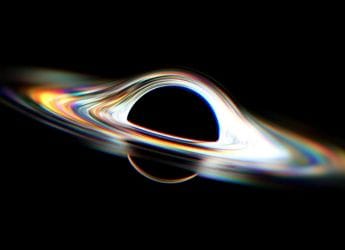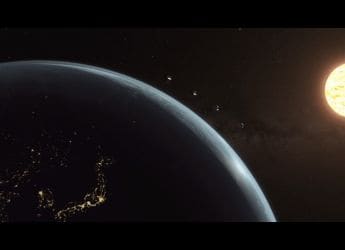- Home
- Science
- Science Features
- NASA’s Curiosity Rover Completes 10 Years of Exploring Mars — Here’s What It Has Found So Far
NASA’s Curiosity Rover Completes 10 Years of Exploring Mars — Here’s What It Has Found So Far
NASA's Curiosity rover analysed 41 rock and soil samples on Marsin the past years.

Curiosity has used its host of instruments and tools to examine Martian surface
It's been more than 10 years since the US space agency NASA's Curiosity rover landed on Mars in search of ancient signs of life on the planet. Curiosity is part of NASA's Mars Science Laboratory mission and is the biggest and the most capable rover ever sent to the Red Planet. Having launched on November 26, 2011, and making its descent on the Martian surface on August 5, 2012, Curiosity has so far covered 29 kilometres and ascended 625 metres on the Gale crater, where it landed. During its expedition so far, Curiosity has used its host of instruments and tools to examine if Mars ever had the right environmental conditions to support small life forms such as microbes.
Digging for evidence, the rover analysed 41 rock and soil samples on the planet in the past years. It scanned the skies of the Red Planet and sent intriguing pictures of shining clouds and drifting moons. With its radiation sensors, Curiosity has been capable of measuring the amount of radiation astronauts in future missions would be exposed to on Mars.
In its most significant finding, the rover concluded that the Gale crater had liquid water as well as the chemical building blocks and nutrients required for sustaining life at least tens of millions of years ago. It also determined that the crater had a lake and whose size waxed and waned over time. It explored the foothills of Mount Sharp in the crater where each layer offers signs on more recent era of the Red Planet's environment.
Watch this video to know more as Curiosity turns 10:
“We're seeing evidence of dramatic changes in the ancient Martian climate. The question now is whether the habitable conditions that Curiosity has found up to now persisted through these changes. Did they disappear, never to return, or did they come and go over millions of years?” said Ashwin Vasavada, Curiosity's project scientist at NASA's Jet Propulsion Laboratory in Southern California.
Considering its abilities and efficiency, NASA recently extended Curiosity's mission for three more years. Now, the rover is passing through a canyon, a new region that is thought to have formed after the water dried up and left salty minerals called sulfates. Scientists plan to explore this sulfate-rich region for the next few years and target particular sites like the Gediz Vallis channel for their study.
Get your daily dose of tech news, reviews, and insights, in under 80 characters on Gadgets 360 Turbo. Connect with fellow tech lovers on our Forum. Follow us on X, Facebook, WhatsApp, Threads and Google News for instant updates. Catch all the action on our YouTube channel.
Related Stories
- Samsung Galaxy Unpacked 2025
- ChatGPT
- Redmi Note 14 Pro+
- iPhone 16
- Apple Vision Pro
- Oneplus 12
- OnePlus Nord CE 3 Lite 5G
- iPhone 13
- Xiaomi 14 Pro
- Oppo Find N3
- Tecno Spark Go (2023)
- Realme V30
- Best Phones Under 25000
- Samsung Galaxy S24 Series
- Cryptocurrency
- iQoo 12
- Samsung Galaxy S24 Ultra
- Giottus
- Samsung Galaxy Z Flip 5
- Apple 'Scary Fast'
- Housefull 5
- GoPro Hero 12 Black Review
- Invincible Season 2
- JioGlass
- HD Ready TV
- Laptop Under 50000
- Smartwatch Under 10000
- Latest Mobile Phones
- Compare Phones
- OnePlus 15R
- Realme Narzo 90x 5G
- Realme Narzo 90 5G
- Vivo S50 Pro Mini
- Vivo S50
- OPPO Reno 15c
- Redmi Note 15 5G
- Redmi Note 15 Pro 5G
- Asus ProArt P16
- MacBook Pro 14-inch (M5, 2025)
- Infinix Xpad Edge
- OnePlus Pad Go 2
- OnePlus Watch Lite
- Just Corseca Skywatch Pro
- Acerpure Nitro Z Series 100-inch QLED TV
- Samsung 43 Inch LED Ultra HD (4K) Smart TV (UA43UE81AFULXL)
- Asus ROG Ally
- Nintendo Switch Lite
- Haier 1.6 Ton 5 Star Inverter Split AC (HSU19G-MZAID5BN-INV)
- Haier 1.6 Ton 5 Star Inverter Split AC (HSU19G-MZAIM5BN-INV)

















